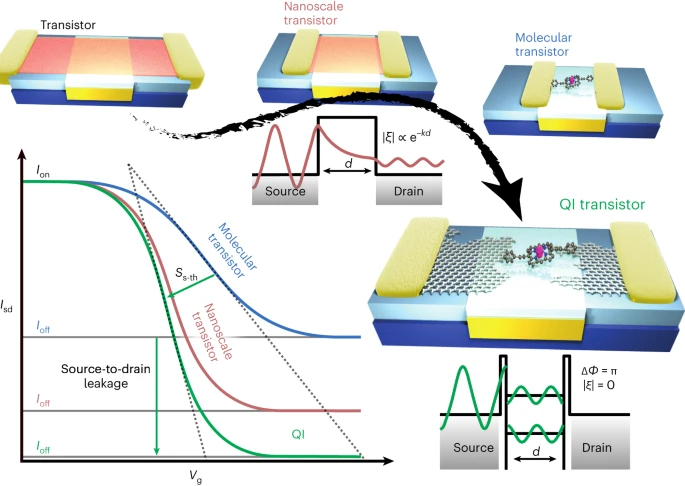Science Daily March 25, 2024
Quantum behaviour presents an unresolved challenge facing electronics at the few-nanometre scale: resistive channels start leaking owing to quantum tunnelling which affect the performance of nanoscale transistors, with direct source–drain tunnelling degrading switching ratios. The strategy to mitigate quantum effects has been to increase device complexity. An international team of researchers (UK, Canada, Italy) demonstrated how the performance of molecular transistors was improved when the resistive channel contained two destructively interfering waves. They used a zinc-porphyrin coupled to graphene electrodes in a three-terminal transistor to demonstrate a >104 conductance-switching ratio, a subthreshold swing at the thermionic limit, a >7 kHz operating frequency and stability over >105 cycles. They mapped the anti-resonance interference features in conductance, reproduced the behaviour by density functional theory calculations and traced back the high performance to the coupling between molecular orbitals and graphene edge states. According to the researchers their results demonstrated how the quantum nature of electron transmission at the nanoscale can enhance device performance, and highlight directions for future development of miniaturized electronics… read more. Open Access TECHNICAL ARTICLE

A QI-enhanced SMT. Credit: Nature Nanotechnology, March 25, 2024